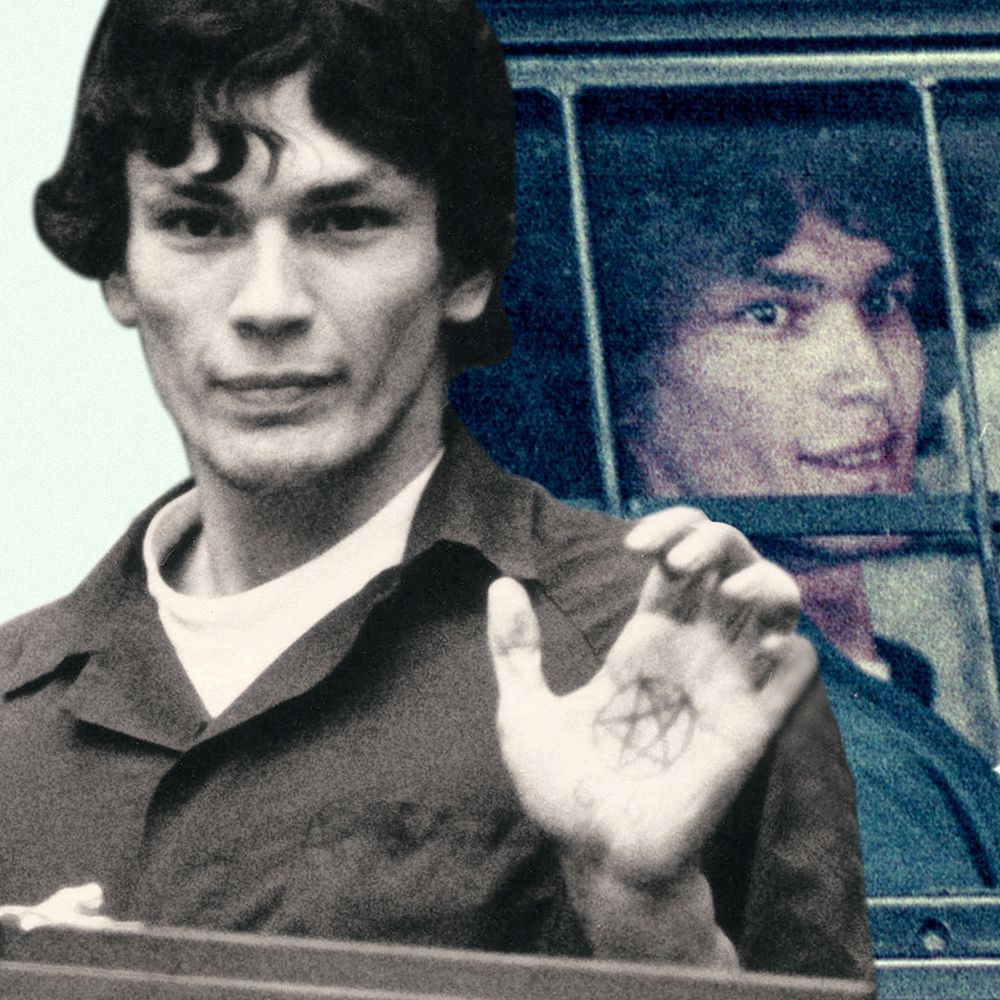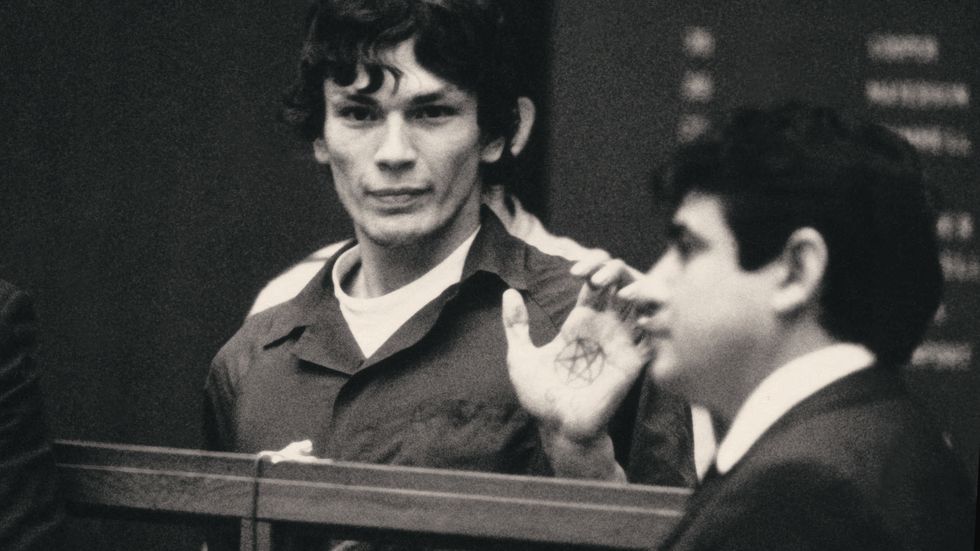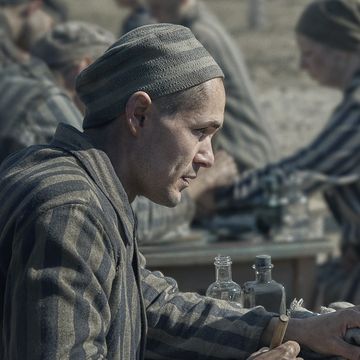Netflix’s latest docuseries Night Stalker: The Hunt for a Serial Killer opens on a flourishing Los Angeles—the city is hosting the 1984 Olympics, both the Queen and the Pope had recently visited, and crime is on the decline. But things quickly turn dark as the city is haunted by an active serial killer linked to dozens of chilling crimes. The horrific four-part series details the crimes of the Night Stalker (later identified as Richard Ramirez), a serial kidnapper, burglar, rapist, and murderer who terrorized the city from the spring of 1984 up until his August 31, 1985 arrest. Netflix’s documentary relies mainly on interviews with survivors, police officers, and news footage to examine those grim months in Southern California.
Primarily told from the perspectives of detectives Gil Carrillo and his seasoned partner Frank Salerno, as well as the family members of victims and survivors, the documentary captures greater Los Angeles area’s frustration and fear in the months the Night Stalker evaded capture. It focuses on the crimes, the evidence, the investigation, and the lives that Ramirez tainted and took, without revealing Ramirez’s name until the third episode, or his picture before the fourth and final installment. The doc chooses to focus on the investigation and the victims, largely leaving the killer's background out of the story.
Richard Ramirez was born in El Paso, Texas in 1960, and was the youngest of five siblings. According to the New York Times, when Richard’s cousin Miguel Ramirez returned home from the Vietnam War when Richard was 12, he showed him photos of Vietnamese women he said he had raped, tortured, and killed. When he was 13, Ramirez witnessed his cousin shoot his wife in the face, killing her. He dropped out of school and moved to Los Angeles when he was 15 years old, where he began burglarizing homes to fund his drug addiction. Ramirez was arrested twice for auto theft in 1981 and 1984, and spent several months in jail.
Richard Ramirez was 24 years old at the time of his first known murder. Night Stalker details the months he spent breaking into homes at night and attacking men, women, and children alike, sexually assaulting, mutilating, and murdering innocent Californians. He often left pentagrams or other occult symbols on the walls of his crime scenes, where he tortured his victims with knives, hammers, tire irons, thumb cuffs, and pistols. After the long, frustrating hunt chronicled in Night Stalker, Ramirez’s photograph was released to the media and he was arrested at the end of the summer of 1985 soon after a civilian spotted him on a bus.
Ramirez’s televised trial began in 1989, and lasted several weeks. Frank Girardot, a journalist who covered the trial for the Los Angeles Herald-Examiner, told a Southern California radio station that “it involved a lot of gruesome testimony and a lot of theatrics from the defendant. He would draw pentagrams on his hand, and hold it up for the cameras, he would smile at people.” Ramirez knew he had a cult-like following of satanists and suitors in attendance, and would put on a show for them. At one point during the already deeply upsetting trial, a juror was found beaten and shot inside her home. It was soon after discovered that her boyfriend had committed suicide after leaving a note admitting that he killed her.
Ramirez's defense team did not provide a potential motive for his client's horrific crimes, stating in court that "We felt and he felt he didn’t particularly want to lay his life out for the public and the court to scrutinize." At the trial’s end, Ramirez was found guilty of all charges against him—13 murders, 5 attempted murders, 11 sexual assaults, and 14 burglaries. He never expressed remorse. After he was sentenced to death, he said to the press: “Big deal. Death always went with the territory. See you in Disneyland.”
As Netflix’s documentary shows, Ramirez attracted the affections of many women during his trial and his years in prison. What the documentary omits is that he wed one of those admirers from prison. Richard Ramirez married Doreen Lioy, a freelance magazine editor, in 1996—she first began writing letters to him in 1985 when she first saw him on television after his arrest. She wrote to him daily, visited him in prison, and attended his trial, even after her family disowned her. "He's kind, he's funny, he's charming," she told CNN in 1997, asserting that she believed her husband was innocent. Lioy wore a gold wedding band herself, but Ramirez wore a platinum one, as he told her that “Satanists don’t wear gold.”
Richard Ramirez spent 23 years on Death Row in California's San Quentin Prison until he died of lymphoma in 2013 at the age of 53.
Lauren Kranc is the assistant content strategy editor at Esquire, where she runs the brand’s social media accounts and covers pop culture and television, with entirely too narrow an expertise on true crime shows















